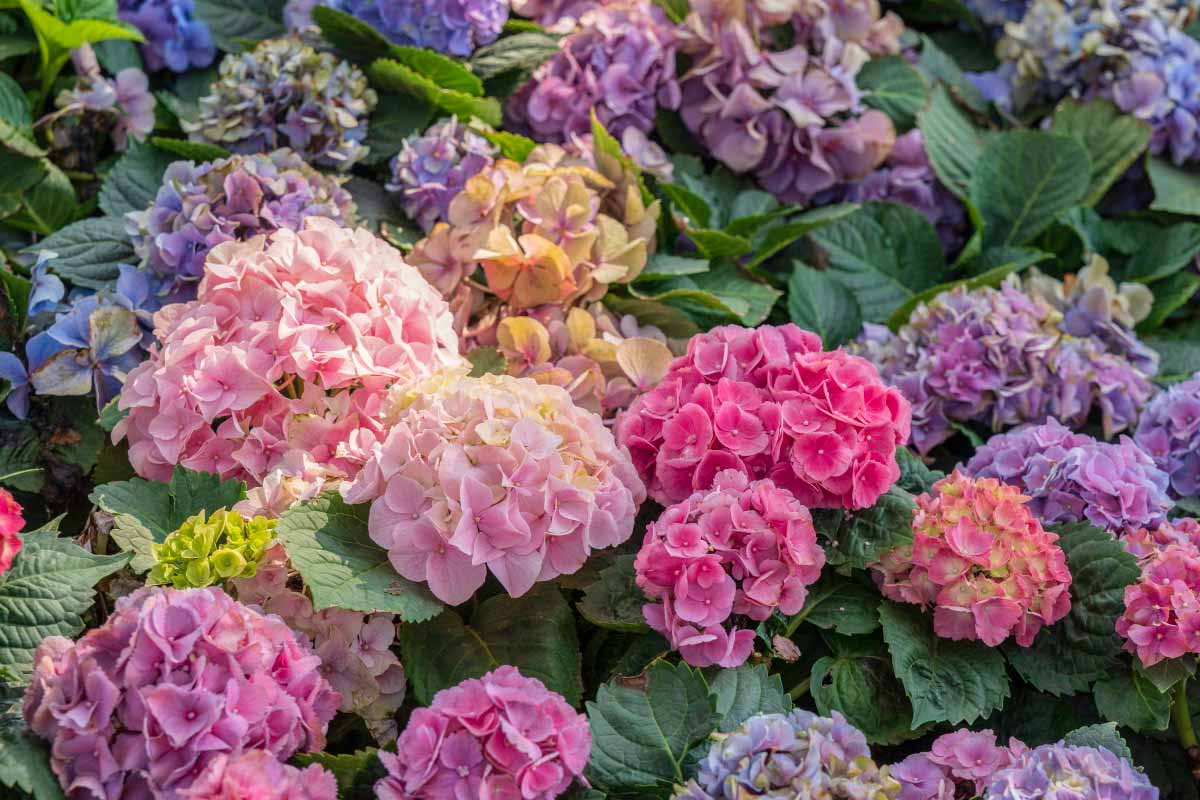Fall work sets the stage for a summer show. Give hydrangeas smart care now and you’ll trade guesswork for guaranteed color. Two simple tasks protect roots and preserve flower buds, while one tempting chore needs patience. The payoff arrives when heat returns and every stem carries a big, bold bloom. Keep tools handy, move with intent, and line up steps that fit your climate so the display looks effortless later.
Fall Basics That Set hydrangeas Up for Spectacular Blooms
Strong summer flowers start with healthy roots and intact buds, so focus on insulation and gentle shaping. That means mulch and light pruning, not drastic cuts. Put hydrangeas on a timeline that respects cooling soil, shifting light, and early frosts, because stress now echoes months later.
Know your shrub types before you clip a single cane. Bigleaf and oakleaf set next year’s buds on old wood. Panicle and smooth bloom on new wood grown in spring. This difference guides every decision, and it explains why some shrubs explode with color while others sulk.
Weather whiplash hurts. Freeze–thaw cycles can heave soil, dry winds strip moisture, and sudden warm spells wake tender tissue too soon. Insulation calms the root zone, while a tidy framework reduces breakage. Good fall habits simplify spring chores and let plants invest energy where it matters—flower production.
Mulching Right Now: Depth, Materials, and Timing
Mulch serves as your straightforward thermal regulation, and hydrangeas respond rapidly to stable conditions. Distribute 2–3 inches (5–8 cm) of bark, pine straw, or shredded foliage across the root area, maintaining distance from stems to avoid decay. In Zone 5 or colder, supplement 5–6 inches (13–16 cm) following ground freezing to preserve warmth.
Select implements that accelerate the task and maintain uniform coverage; a broad rake relocates material without overwhelming crowns. Mulch retains moisture until spring and suppresses weeds that deplete nutrients. For clay substrate, incorporate compost while mulching to enhance structure and facilitate drainage. Sandy plantings require additional organic content to retain water.
March matters. Pull mulch back slightly to help soil warm and wake roots. Watch for low spots where water gathers; fix grade now to avoid soggy roots. Consistent insulation lowers stress from temperature swings, reduces frost heave, and sets the stage for thicker stems and larger clusters when summer arrives.
Prune With Restraint So hydrangeas Keep Next Year’s Buds
The goal this fall is neat, not new. For bigleaf and oakleaf, which bloom on old wood, limit cuts to cleanup. That single change saves flower buds. Remove dead, damaged, or crossing pieces, then shorten any outlier cane to just above a healthy bud. One careful pass keeps structure open and airflow steady.
Improper pruning ranks as a top reason shrubs skip flowering. Cut with sharp bypass pruners and steady hands; crushing tissue delays healing. Avoid shearing that erases shape and buds together. When flowers fade in summer, that’s the window for bigger edits on old-wood types, because next year’s clusters form soon after.
Panicle and smooth types bloom on new wood grown in spring. You can shape them, yet fall cuts can increase winter injury, so wait until late winter or early spring. Remove weak wood, then head back to build sturdy frameworks. That timing encourages strong shoots, better balance, and dependable bloom production.
Fertilizing Can Wait: Spring Is the Safe Window
Feeding now pushes soft growth that cold snaps punish, and hydrangeas pay the price. Tender tissue blackens in frost, pests find easy entry, and roots face burn risk when soil stays cold. Skip fertilizer in fall, because energy belongs in dormancy, hardening, and root repair, not in a rush of green tips.
Choose a balanced 10-10-10 or a rose-type blend when the plant asks for it. Buds swell in April or May, and soil finally warms, so nutrients move where they’re needed. Spread the dose evenly over the drip line, water it in, and resist the urge to overdo it; excess salts stall growth.
Right product, right moment, right result. Spring feeding supports bloom count without inviting damage, and it pairs well with fresh mulch and a structural prune on new-wood types. Fall restraint prevents setbacks that erase months of progress, so your plan stays clean and your shrubs stay ready.
Cold Defense, Snow Load, and Wildlife Pressure
Cold climates call for extra armor, and hydrangeas appreciate it. In USDA Zone 5 and below, wrap plants with burlap once temperatures settle, but keep fabric loose on stakes so air flows and mildew stays away. Tall shrubs suffer under heavy snow, so loop twine around the framework to prevent sudden snaps.
Moisture management matters before the freeze. Water deeply ahead of hard cold, because dry roots fail first, especially in containers. Move pots into a garage or a wind-sheltered spot, then add a straw layer on top to buffer temperature swings. Scan beds after storms; fix pooling water fast to avoid rot.
Critters read winter as open season. Deer browse buds, so ring the base with cayenne pepper or crushed eggshells as mild deterrents, and consider an ultrasonic repellent where pressure runs high. In warmer Zones 6 and up, skip burlap, yet keep the mulch and that final deep watering; both steps still pay off.
One Simple Fall Plan That Pays Off All Summer Long
Small decisions now shape next summer’s show. Lay mulch to steady the root zone, prune with a light hand, and resist fertilizer until spring growth signals go. Keep soil draining, water deeply before hard freezes, and shield tall shrubs from heavy snow and hungry deer. These simple habits build stronger wood and fuller flower heads without extra fuss. With a clear plan and steady timing, hydrangeas reward you with rich color, larger clusters, and a garden that feels effortless all season.
